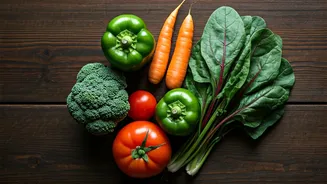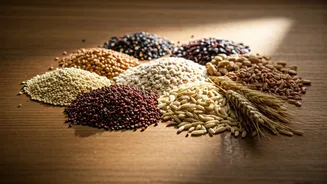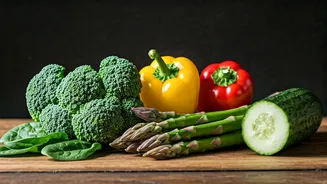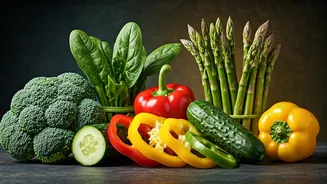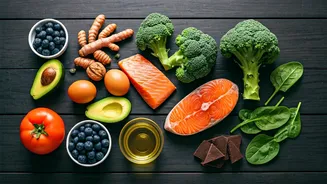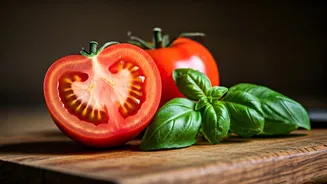Leafy Green Powerhouses
Leafy green vegetables are packed with nutrients and are very low in carbohydrates, making them ideal for individuals managing diabetes. Spinach, kale,
and other greens offer a wealth of vitamins, minerals, and antioxidants, contributing to overall health. Their high fiber content slows down glucose absorption, preventing rapid spikes in blood sugar levels. Eating these greens can also improve insulin sensitivity, supporting better blood sugar control. Consider adding them to salads, smoothies, or using them as a base for your meals to reap the benefits. These nutrient-dense greens support not only blood sugar management but also heart health and weight management, which are crucial for diabetes.
Non-Starchy Vegetables
Non-starchy vegetables such as broccoli, cauliflower, and bell peppers are excellent choices for people with diabetes due to their low carbohydrate content. These vegetables provide essential vitamins and minerals without significantly affecting blood sugar levels. Broccoli is particularly rich in sulforaphane, a compound that may improve insulin sensitivity and protect against diabetes complications. Cauliflower, versatile and low in carbs, can be used in various recipes. Bell peppers contribute color and flavor to meals, offering antioxidants like vitamin C. Incorporating a variety of these vegetables into your diet not only provides essential nutrients but also helps in controlling portion sizes, which is important for managing blood glucose levels.
Fiber-Rich Options
Fiber plays a crucial role in diabetes management, and certain vegetables are exceptionally rich in it. Brussels sprouts, with their high fiber content, help slow the absorption of sugar into the bloodstream, preventing blood sugar spikes. Artichokes are another excellent source of fiber, aiding in digestion and blood sugar control. Fiber promotes feelings of fullness, which can help in managing weight and portion control. These vegetables also support gut health, influencing the overall metabolic processes. Including them in meals is a step towards improving blood sugar levels and maintaining a healthy digestive system. Consider steaming, roasting, or including them in salads for a delicious way to boost your fiber intake.
The Tomato Advantage
Tomatoes can be a beneficial addition to a diabetes-friendly diet. While technically a fruit, tomatoes are low in carbohydrates and have a moderate glycemic index. They provide antioxidants, including lycopene, which may offer protection against chronic diseases. The fiber content in tomatoes helps in stabilizing blood sugar levels. They can be enjoyed fresh in salads, cooked in sauces, or added to various dishes. When consuming tomatoes, be mindful of portion sizes, especially if using them in sauces or other preparations that might contain added sugars. Incorporating tomatoes into your meals can enhance their nutritional value while keeping blood sugar in check.
Onions and Garlic
Onions and garlic, often used to flavor various dishes, also have potential benefits for people with diabetes. They contain compounds that may help improve insulin sensitivity and reduce blood sugar levels. Onions are a good source of chromium, a mineral that plays a role in glucose metabolism. Garlic has been found to have positive effects on blood sugar control. Both onions and garlic add flavor and depth to meals, making them a nutritious addition to any diet. Incorporate them in your cooking by sautéing them, using them in stews, or adding them to your salads. However, their use should be combined with other healthy dietary choices to ensure a balanced approach to diabetes management.
